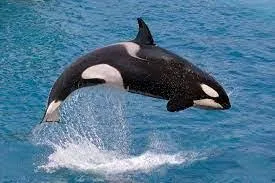UPSC GS Paper 1
Tartessos Civilization
- News: Archaeologists are searching for Spain’s lost Tartessian civilization.
- Overview: Tartessos was a fascinating civilization that thrived in the southwestern Iberian Peninsula, roughly in modern-day Spain, from around the 9th to 6th centuries BCE.
-
- It flourished around the Guadalquivir River basin and the neighboring lands.
-
- Wealth and Skills:
-
- Renowned for their wealth, particularly in metals like copper, silver, and tin.
- Known for their skilled metalworkers and shipbuilders.
-
- Trade: Facilitated extensive trade throughout the Mediterranean, reaching as far as Egypt, Greece, and Israel.
UPSC GS Paper 2
Private Property Acquisition
- News: The Supreme Court recently gave a significant ruling regarding private property acquisition.
- More on News: The court ruled that compulsory acquisition, without adhering to mandatory procedures and merely providing compensation to owners afterward, would not render the acquisition constitutional.

- Constitutional Protection of Property: The Supreme Court emphasized that the right to private property is protected under the Constitution and is also considered a human right.
- Mandatory Procedures for Acquisition: The court declared that for a valid acquisition of property, it is not sufficient to just have the power of eminent domain and provide compensation.
-
- Proper legal procedures must be established and followed.
-
- Article 300A: Despite the omission of the right to property as a fundamental right by the 44th Constitutional Amendment, Article 300A was added.
-
- Article 300A stated that no person shall be deprived of their property except by the authority of law, involving adhering to due process.
-
- Procedural Rights: The Supreme Court outlined seven procedural rights that need to be respected during property acquisition:
- Right to Notice: The duty of the State to inform the person about the intended acquisition.
- Right to Be Heard: The state must listen to objections from the property owner.
- Right to a Reasoned Decision: The state must explain its decision regarding the acquisition.
- Demonstration of Public Purpose: The acquisition must exclusively serve a public purpose.
- Right to Fair Compensation: The property owner is entitled to reasonable compensation.
- Efficient Process: The acquisition process should be conducted efficiently and within set timelines.
- Conclusion of Proceedings: Acquisition isn’t complete without the actual physical possession of the property being taken.
UPSC GS Paper 3
Co-lending
- News: The Finance Ministry has asked the State Bank of India (SBI) to set up a committee to address issues related to the co-lending business model.
- Definition: It is an arrangement where multiple lenders partner to provide loans to borrowers.
- Benefits:
-
- Increases lending capacity.
- Reduces risk for individual lenders.
-
- RBI Guidelines:
-
- Banks and Non-Banking Financial Companies (NBFCs) can co-lend loans to priority sectors.
- NBFCs must assume a minimum of 20% credit risk, with the remaining risk on banks.
-
- Restrictions:
-
- Banks are not allowed to enter into co-lending arrangements with an NBFC belonging to the promoter group.
-
High Energy Photon Source Synchrotron
- News: China has inaugurated a next-generation synchrotron called the High Energy Photon Source Synchrotron.
- Synchrotron: A synchrotron is a type of circular particle accelerator.
-
- Working: It works by accelerating charged particles (electrons) through sequences of magnets until they reach almost the speed of light.
- These fast-moving electrons produce very bright light, called synchrotron light.
- Properties: This very intense light, predominantly in the X-ray region, is millions of times brighter than light produced from conventional sources and 10 billion times brighter than the sun.
- Scientists can use this light to study minute matter such as atoms and molecules.
-
- High Energy Photon Source Synchrotron (HEPS):
-
- Definition: The HEPS is a next-generation synchrotron that generates a specific type of synchrotron light source.
- It operates by accelerating electrons to nearly the speed of light and making them travel in a circular path.
- As these high-speed electrons change direction under the influence of magnetic fields, they emit Synchrotron Radiation, which includes X-rays.
- These X-rays are then harnessed for various scientific applications.
- Salient Features of HEPS:
- Electron Acceleration: Can accelerate electrons up to energies of 6 gigaelectron volts within its storage ring, which has a circumference of 1.36 kilometers.
- Brightness: Generates X-rays that are 10 times brighter than those produced by existing synchrotron facilities, allowing for unprecedented clarity in imaging and analysis.
- Imaging Capabilities: Offers extremely precise imaging capabilities, enabling scientists to observe and manipulate materials at the atomic and molecular levels.
- Efficiency: Reduces the time taken by experiments from milliseconds to hundreds of nanoseconds.
- Applications of HEPS:
- Material Science: Enables the detailed study of materials’ structure and properties, which is crucial for developing new materials with enhanced performance.
- Biology: Allows for the examination of biological molecules and complex protein structures, aiding in understanding diseases and developing new treatments.
- Nanotechnology: Supports the development of nanotechnology by providing insights into the behavior of nanomaterials and their applications
- Definition: The HEPS is a next-generation synchrotron that generates a specific type of synchrotron light source.
-
- Global Presence of Synchrotrons: There are approximately 70 synchrotrons around the world in various stages of development.
- India’s Synchrotron Facility: India has a facility called the Indus Synchrotron Radiation Facility (ISRF) located at the Raja Ramanna Centre for Advanced Technology (RRCAT) in Indore
Irradiation Technology for Onions
- News: The Central Government is planning to irradiate onions with gamma rays to curb post-harvest losses.
- Definition: Irradiation is the process of exposing any object to ionising radiation.
-
- The food radiation exposes food and food packaging to radiation from gamma rays, x-rays or electron beams.
- In case of onions, they are exposed to gamma ray irradiation which helps in effective preservation by preventing them from sprouting, thus extending the shelf life and reducing spoilage.
-
- Establishment and Capacity: Irradiation facilities are being established in Maharashtra, with the capacity to treat around 25,000 tonnes of onions.
- Operational Framework: The project will operate under public-private partnerships, financially supported by the agriculture and food processing ministries.
- Irradiation Method: Irradiation involves using ionizing radiation, such as gamma rays, to treat food items.
-
- This process is applied to onions to prevent sprouting and microbial growth.
-
- Objective:
-
- The primary goal is to extend the shelf life of onions and reduce post-harvest losses.
-
- Advantages of Using Irradiation
-
- Loss Reduction: Typically, about 25% of onion crops are lost post-harvest; irradiation aims to reduce this to 10-12%.
- Increased Storage Duration: Onions can be stored for up to seven and a half months with irradiation, compared to only about four months with conventional cold storage methods.
- Quality Improvement: The use of irradiation results in a recovery rate of nearly 84% for Grade A onions, significantly higher than the 56% recovery rate with traditional storage.
-
- Impact of Irradiation Facilities
-
- Regional Focus: Maharashtra, which accounts for 43% of India’s onion production, will be a primary beneficiary, along with other significant producers like Madhya Pradesh, Karnataka, and Gujarat.
- Supply Chain Improvement: The technology is set to stabilize the onion supply chain, reduce losses, and aid in government procurement efforts.
-
Digital Arrest
- News: To combat rising “digital arrests” by cybercriminals posing as law enforcement officers, the central government has partnered with Microsoft to block Skype IDs used for online intimidation.
- Definition: ‘Digital arrest’ is a new and innovative tactic employed by cybercriminals to defraud gullible victims and extort money.
- Modus Operandi: Online fraudsters and criminals call potential victims, claiming they have sent or received parcels containing illegal goods, drugs, fake passports, or other contraband items.
-
- In some instances, criminals contact relatives or friends of the target, alleging the target’s involvement in a crime or accident and stating they are in custody.
-
- Tactics:
-
- Criminals often use images or identities of police personnel to appear authentic.
- They demand money from targets for a ‘compromise’ and closure of the case.
- Victims are sometimes “digitally arrested” and forced to stay visible over Skype or other video conferencing platforms until demands are met.
- Cybercriminals use studios resembling police stations or government offices and wear uniforms similar to those of law enforcement agencies.
-
Read also: Kalapani Land Dispute between India and Nepal: Origin, Challenges and Resolution | UPSC
Ambaji White Marble
- News: Ambaji marble has got the GI tag.
- Ambaji Marble: It is named after the town of Ambaji in the state of Gujarat.
-
- Ambaji marble is renowned for its stunning white appearance and unique natural patterns.
-
- Characteristics:
-
- The patterns in Ambaji marble range from fine and delicate to bold and pronounced, giving each slab a distinct and individualistic appearance.
- These variations occur naturally due to the presence of minerals and impurities during the marble formation process.
-

- Use: It has a very long-lasting shine and durability, making it widely used for luxury architectural projects, sculptures, and monuments.
- Key Facts about Marble
- Formation: Marble is a metamorphic rock that forms when limestone is subjected to heat and pressure, typically occurring at convergent plate boundaries.
-
- Some marble also forms by contact metamorphism when a hot magma body heats adjacent limestone or dolostone.
- This process also occurs at convergent plate boundaries.
-
- Composition:
-
- Marble is composed primarily of the mineral calcite (CaCO3).
- It usually contains other minerals such as clay minerals, micas, quartz, pyrite, iron oxides, and graphite.
-
- Geographical Indication (GI) Tag:
-
- A geographical indication or GI is a sign used on products that have a specific geographical origin and possess qualities or a reputation that are due to that origin.
- Geographical Indications are part of the intellectual property rights that comes under the Paris Convention for the Protection of Industrial Property.
- In India, Geographical Indications registration is administered by the Geographical Indications of Goods (Registration and Protection) Act, 1999.
- Geographical indications are typically used for agricultural products, foodstuffs, wine and spirit drinks, handicrafts, and industrial products.
-
Apple Cultivation
- News: Apple cultivation is now viable in the lower regions of Spiti, up to an elevation of 3,400 metres above sea level.
- Overview: Apples (Malus pumila) are a temperate fruit that thrives in cool climates.
-
- In India, apples are grown in the hilly regions that experience cold winters and mild summers.
-
- Major Producing States:
-
- Jammu & Kashmir
- Himachal Pradesh
- Uttarakhand
- Arunachal Pradesh
- Nagaland
- Sikkim
- These states benefit from the cool climate due to the Himalayas.
-
- Ideal Growing Conditions:
-
- Altitude: 1500-2700 meters above sea level
- Temperature: Average summer temperature of 21-24°C, and winter chilling of 1000-1500 hours below 7°C
- Rainfall: Well-distributed rainfall of 1000-1250 mm throughout the year
- Soil: Well-drained, loamy soil
-
- Varieties of Apples
-
- Ambri
- McIntosh
- Granny Smith
- Honeycrisp
- Chaubattia Anupam
- Golden Delicious
- Sunehari
- Fuji
- Tydeman’s Early
-
Lunar Polar Exploration (LUPEX) Mission
- News: The India-Japan partnership for their joint moon mission, Lunar Polar Exploration Mission (LUPEX), is likely to be delayed.
- Collaboration: Lunar Polar Exploration (LUPEX) Mission is an ISRO-JAXA collaborative mission.
-
- ISRO is responsible for developing the lander.
- JAXA is responsible for procuring the rover and launch vehicle.
-
- Aim: To acquire water resource data to reveal the potential use of lunar water as a resource.
PREFIRE Polar Mission
- News: NASA will soon launch two satellites under the PREFIRE polar mission.
- Definition: PREFIRE stands for Polar Radiant Energy in the Far-InfraRed Experiment.
- Aim of the Mission:
-
- Addressing Knowledge Gaps: Aimed at filling the knowledge gap about two of the most remote regions on Earth — the Arctic and Antarctic.
- Measuring Far-Infrared Radiation: It will measure the amount of far-infrared radiation (heat) emitted from two of the coldest, most remote regions on the planet, into space.
- Understanding Atmospheric Influence: It will find out how atmospheric water vapor and clouds influence the amount of radiation that escapes to space.
- Composition of Mission: PREFIRE is composed of two small CubeSats outfitted with specialized miniature heat sensors.
-
- Launch Vehicle: They will be launched with the help of the Electron launch vehicle, which is equipped with technology proven on Mars.
- Significance of the PREFIRE Polar Mission
-
- Energy Transfer: At the tropics, Earth absorbs a lot of energy from the Sun. This energy is transferred to polar regions through wind movement and water currents, and then to space.
- Measurement Gap: About 60% of the heat energy, going outward into space from Earth in the form of far-infrared wavelengths, has never been measured.
- Model Improvement: The knowledge from the mission will improve computer models that are used to predict how Earth’s ice, seas, and weather will change in a warming world.
-
Loss of Trees in India
- News: As per analysis of University of Copenhagen researchers, India may have lost around 5.8 million fully grown trees in agricultural lands between 2019-2022.
- Findings of the Study
- Disappearance of Large Trees:
-
- During 2018–2022, it was observed that 11% of the large trees identified in 2010–2011 were no longer visible. This data may indicate their disappearance.
- However, it’s important to note that this doesn’t indicate a general reduction in trees outside of forests because the research was specifically concentrated on large individual trees.
-
- Regional Losses:
-
- Major losses (up to 50%) were noticed in certain areas of Telangana, Maharashtra, and eastern Madhya Pradesh.
- In certain hotspot regions, as many as 22 big trees disappeared per square kilometre.
-
- Timeframe of Losses:
-
- The majority of losses have probably happened between 2018 and 2020.
-
- Methodology by Copenhagen Researchers
-
- Tracking Large Trees: The analysis tracked individual large trees (not overall tree cover) in farmlands using high-resolution satellite imagery and machine learning.
- Satellite Imagery: The researchers combined satellite imagery from RapidEye and PlanetScope repositories.
- These satellites have resolutions of three to five meters, allowing them to detect individual trees.
-
- Reasons for the Loss of Large Trees in Indian Farmlands
-
- Conversion to Paddy Cultivation: Conversion of farmland with trees to paddy cultivation.
- Replacement of Agroforestry Systems. Established agroforestry systems are being replaced by paddy expansion that is supported by new water sources.
- Removal of Large Trees: Large trees are removed, and trees are now cultivated in separate plantations that have lower ecological value.
- Agroforestry Management Cycles: Some loss is also a natural part of agroforestry management cycles.
-
Killer Whales or Orcas
- News: Two people were rescued recently after a group of orcas sank their 15-metre-long sailing yacht in the Strait of Gibraltar.

- Killer Whales (Orcas): Killer whales, also known as Orcas, are found across the world.
-
- They are the largest member of the Delphinidae family, or dolphins.
- They are also called as wolves of the sea.
-
- Type: Mammals
- Population Distribution: Killer whales are found in all oceans.
-
- They are mostly found in cold places like Antarctica, Norway, and Alaska, but they also inhabit warmer tropical and subtropical waters.
-
- Family: Members of this family include all dolphin species.
-
- It also includes other larger species such as long-finned pilot whales and short-finned pilot whales, whose common names also contain “whale” instead of “dolphin”.
-
- Social Structure: Killer whales are highly social and most live in social groups called pods.
-
- Pods are groups of maternally related individuals seen together more than half the time.
-
- Curiosity: Given their highly social and curious behavior, orcas often approach fishing vessels to assess if there is any fish in the net or just to observe people on the vessel.
- Communication: They rely on underwater sound to feed, communicate, and navigate.
- Body Size: They can measure up to 8 meters in length and weigh up to 6 tonnes as adults.
- Conservation Status: They are considered Data Deficient on the IUCN Red List of Threatened species.
Facts for Prelims
Bharat Parva Celebration
- News: Bharat Parv has been celebrated at the 77th Cannes Film Festival.
- Event Organized by: This event was organized by NFDC in association with FICCI under the aegis of the Ministry of Information and Broadcasting, Government of India.
- Performance Highlights: The evening featured singer Sunanda Sharma performing lively Punjabi songs, joined by emerging singers Pragati, Arjun, and Shaan’s son, Maahi.
-
- The highlight was when all the singers came together to perform “Maa Tujhe Salaam,” receiving enthusiastic applause from the audience.
-
- Significance
-
- Celebration of Indian Culture: The event celebrated India’s diverse culture, cuisine, handicrafts, and cinema on the French Riviera.
- Promotion of Soft Power: It marked the celebration of cinema, culture, and artistic unity, showcasing India’s soft power on the international platform.
- Representation of Indian Cinema: The participation of renowned Indian actors underscored the diverse and vibrant essence of Indian cinema and its increasing influence on the international platform.
-
- Cannes Film Festival: The Cannes Film Festival was born in 1938 from an idea by Philippe Erlanger, aborted by the war, and later taken up by Jean Zay and Albert Sarrault.

